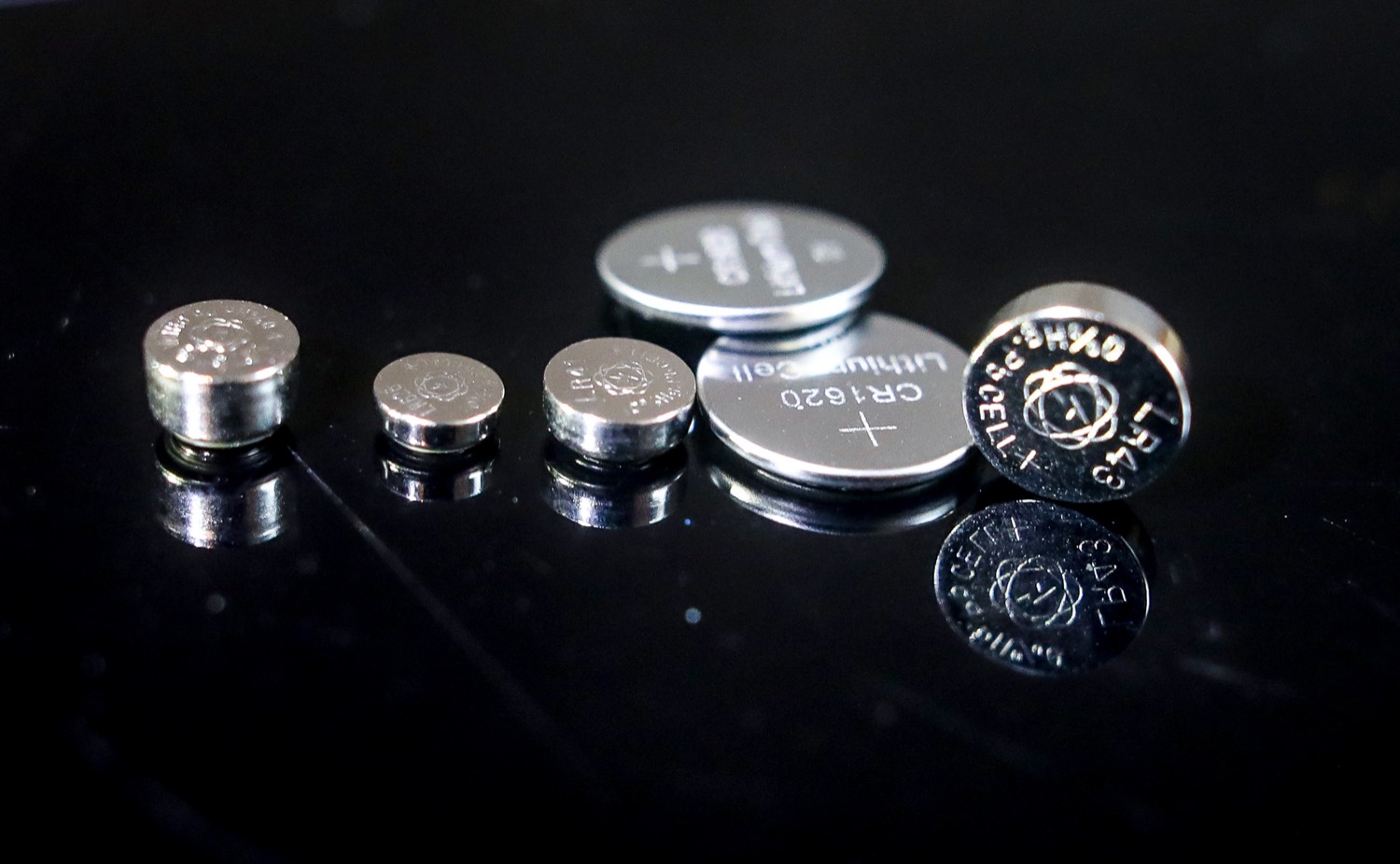

Children are swallowing more button batteries than ever before. A study recently published in Pediatrics reported an alarming increase in kids’ battery-related emergency room (ER) visits from 2010 to 2019. While ingested button batteries—ranging from 5 to 25 millimeters—are excreted through the stool, having them pass through the body can cause severe and potentially fatal harm to multiple tissues and organs.
Button batteries are in everyday household items that kids can quickly get their hands on, from watches and key fobs to toys and sing-along books. Mark Chandler, a research scientist at Safe Kids Worldwide and lead author of the study, says children are naturally curious to explore and understand their environment, often placing objects in their mouths, noses, and ears. “Parents often aren’t aware of the ingestion dangers posed by button batteries and how they can often be easily removed from devices,” Chandler explains.
These small coin-shaped batteries are popular because they have a lower chance of self-discharge through specific chemical reactions that gradually reduce the stored charge, resulting in a longer shelf life than regular batteries. Kelly Johnson-Arbor, a medical toxicologist and co-medical director of the National Capital Poison Center, says that with items such as mobile devices using more button batteries, we’ll likely see more exposure cases in children each year.
The research study used the National Electronic Injury Surveillance System to collect data on ER visits where children had either ingested a battery, placed it around or in their mouth, or inserted it into their ears or nose. In the past decade, there were 70,322 battery-related ER visits (9.5 per every 100,000 children yearly). Button batteries were the most common battery ingested, making up 84.7 percent of visits.
[Related: Babies and pets might freak out during fireworks shows, but you can help them relax]
Children five years and younger had the highest rates of hospital visits. The average age was about three years old. What’s more, the number of battery-related ER visits increased from 2010 to 2017. “While we suspected an increase, we were surprised to find more children had visited the emergency room for battery-related injuries in the decade between 2010 and 2019 than in the previous two decades combined,” comments Chandler. “The proportion of patients hospitalized also increased, indicating that battery-related injuries may be becoming more severe.”
Each year, nearly 2,000 button battery ingestion cases are reported to US poison control centers in children under six years old, explains Johnson-Arbor. Around two percent of cases involve life-threatening symptoms that require medical intervention or even death.
Johnson-Arbor explains it can take two hours to see serious injuries after a child swallows a button battery. In the esophagus, the chemicals in the button batteries can burn holes in the muscular tube. As batteries travel down the esophagus, it can become lodged in the throat and the pressure on the walls can cause tissue damage.
While it’s still dangerous for the battery to be in the stomach and intestines, she explains there is more free-flowing movement than in the esophagus. “It’s unlikely that a battery will stay in one place long enough in the stomach and intestines to cause direct tissue damage.”
One of the more concerning battery-related damage is electrical injury. Johnson-Arbor explains that when a button battery is swallowed, the electrical current created between the two poles of the battery causes a hydrolysis reaction in the fluid in the esophagus. The hydrolysis reaction forms corrosive hydroxide ions that cause chemical burns to nearby tissues. Thisreaction continues until the battery runs out of energy. Still, Johnson-Arbor adds, “it’s important to remember that ‘dead’ batteries can still generate current and cause potentially dangerous injuries.”
[Related: What is botulism, anyway?]
Chandler hopes that the study’s findings will remind all parents and caregivers to be extra vigilant when children are using devices with button batteries. If the product is damaged or the button battery compartment cannot be secured, immediately discard the product. Both experts advise the following to prevent further battery-related incidents:
- Buy only the batteries that you need and buy only single units
- Lock up or store unused batteries out of the reach of young children
- Don’t change button batteries in front of children
- Tape up or secure button batteries tightly within their devices
If you suspect your one-year or older child has ingested a battery in the past 12 hours, there are some immediate actions you can take. Both experts advise giving two teaspoons of honey every ten minutes for up to six doses and then going straight to the ER. Johnson-Arbor warns that honey is never an acceptable alternative to seeking medical care for a swallowed battery, however, it can temporarily help as honey coats the battery and reduces the production of hydroxide ions. This would delay corrosive tissue injury to the esophagus as you head to the hospital. “Do not delay going to an ER by stopping at a grocery store or going to a neighbor’s house to get honey because button battery treatment is extremely time-sensitive,” Johnson-Arbor says.
Because of a potential botulism risk, honey should not be given to children younger than a year. Other precautions involve not inducing vomiting and stopping your child from eating or drinking until you see a doctor. For more information, visit the National Battery Ingestion Hotline at 1-800-498-8666.
